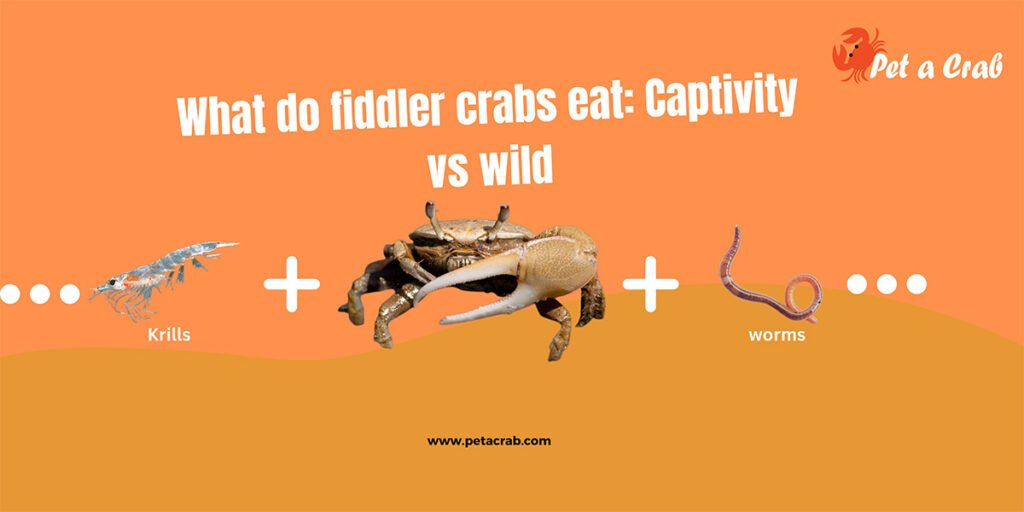The spider crabs with their unique appearance have captivated the interest of many. They have interesting behaviors and survival strategies. Spider crabs play a vital role in the marine world. Today we’ll dive into the world of the spider crab. Also, uncover the facts and secrets about their lives.
So, let’s start!
The Basics Of Spider Crab
Spider crabs are renowned for their long legs and rounded spiky carapaces. They are a wide range of sizes across different species. But all kinds of spiders belong to the Majoidea family. Among them, the Japanese spider can stand out the most. Because they have the longest leg span of any arthropod.
Their leg span is around 3.7 meters according to Wikipedia. But their physical appearance varies greatly. Honestly, most species display muted colors like browns and sandy tones. Their skin color plays a vital role in their survival. Virtually, their color blends with the seafloor.
Spider crabs have adapted to thrive in a variety of marine environments that showcase their remarkable versatility.

Habitat of Spider crab
Spider crabs are widely distributed in the fished commercially in temperate water. Their habitat varies as they have different species. As different species some prefer shadowy recesses of rocks while others find sandy plains of crabs. Like, the Long Beaked spider makes its home in European coastal water.
Also, the Japanese spider lives in the depths of the Pacific Ocean near Japan. So, it varies in different species where they live. Also, the choice of habitat is largely influenced by the availability of food sources. Not only food availability but also protection from predators also influences their habitat. Also, they need suitable breeding grounds.
Practically, they have the remarkable ability to adjust according to their surroundings.
Hunting Techniques and Diet of Spider Crab
The diet of spider crabs is versatile. Also, their hunting strategies enable them to thrive in their diverse habitat. As omnivores, their diet has a wide range of food sources. They eat the decaying matter of fish, invertebrates, and algae. They also eat plants and small marine animals.
In pursuit of nourishment, spider crabs employ their lengthy legs in captivating ways. Their legs are not only for mobility but also act as a tool for sifting through sand to unearth hidden meals. Spider crabs’ legs help them to catch small creatures in the sea. By camouflaging themselves some species take their feeding strategy a step further.
As they camouflage with debris to ambush prey. Mainly it’s good for them to save themselves from predators. Their unique diet and hunting method reflect their remarkable adapting method in the marine world.

Reproduction of Spider Crab
The mating rituals of spider crabs are amazing. Typically, the sequence begins when a female crab sheds her old exoskeleton. Honestly, it’s a process known as molting. Their period is closely monitored by a male crab. The male crab protects females during the critical phase.
Commonly, their gesture underlines the communal aspect of their existence. After successful mating the female carries the fertilized egg. They attach them to the underside of their abdomen. But when the eggs hatch, they release the large plankton larvae into the ocean. Frankly, it’s hard for the larvae to survive in the vast ocean environment.
Because of the whims of the ocean, numerous predators can harm them. But those who can survive go through a series of development phases. The development phase helps them from larvae to adults.
Defense and Camouflage Strategies of Spider Crab
Surprisingly, spider crabs have the art of blending into their surroundings. It’s a skill for avoiding predators. Mainly they decorate themselves with natural materials found in the seabed. They select things like algae, and stones and attach them to their shells. They have long legs which is important for their camouflage behavior.
Spider crabs fold their legs close to their bodies and remain still for extended periods. It helps make them harder to detect among the sea’s natural debris. Because of their camouflage behavior, they reduce their visibility to predators. Truly that helps them to increase their survival in the marine world.

Importance in Ecosystem
Spider crabs serve as essential components of their marine atmosphere. As scavengers, they play a vital role in the ocean nutrient cycling process. That expedites the breakdown and recycling of nutrients. So, this fosters a healthier marine ecosystem. This process cleans the ocean floor of the sea.
But spider crabs also can prey on a variety of marine predators. Their existence provided sustenance for large fish and even some seabirds. This indicates the spider crabs’ role in maintaining the balance in the marine world.
Threats and Conservation for Spider Crab
The preservation of spider crab species is now a challenge. Their survival is threatened by humans. The biggest concern is the destruction of their habitat. Commonly, coastal development and bottom trawling fishing methods harm their habitat. Pollution like plastic waste and chemicals threatens their habitats.
Overfishing poses risks for many species that highly value their culinary applications. We need to address their threats and efforts toward sustainable conservation. We need to enforce fishing quotas. Also, public education on the ecological importance of spider crabs is important. However, pollution is also essential to safeguard the future of these unique marine creatures.
Taking proper conservation actions can ensure that spiders can continue to thrive in their natural habitats.
Some Facts About Spider Crab
Spider crabs are known for their unique appearance and interesting behavior. Here are some facts about the spider crab that you should love to know.
- They look like spiders because of their round shells and long legs. So, they are called spider crabs.
- Most of the species can live long.
- Spider crab’s carapace stays the same size once they become adults. Although their legs keep growing.
- All the spider crab species have eight eyes.
- You can have them as a pet but it’s difficult to maintain them because of their size.
Wrap Up
Hope this article will help you to know more about the spider crab. For the marine ecosystem spider crabs are important. They have very beautiful survival skills to save them from predators. We need to save them and work for their conservation.
Related article – Arrow crab


